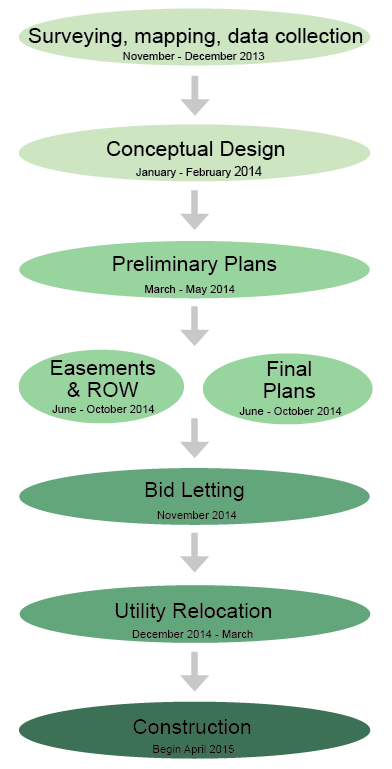Roundabouts come back around
The Department of Public Works conduct improvements for NW 100th street
May 1, 2014
The construction of a new high school brings attention to possible road way issues. “Everyone is familiar with the kind of headaches we have in front of the high school today, where it is currently located,” Johnston Public Works Director Dave Cubit said. The new high school will be located west of NW 100th Street and north of NW 62nd Avenue.
Currently NW 100th street is referred to as a rural section meaning there is no shoulder with an open ditch. The street will be constructed into a four lane, urban section. The improvements will consist of a four lane road, curbs, storm sewers, three roundabouts and sidewalks. The roundabouts will be located at NW 68th Avenue, Ashton Avenue and Newport Vista Drive.
Sophomore Kathryn Paszkiewicz is a resident near NW 100th street. “I will really dislike [the roundabouts],” Paszkiewicz said. “That road seems like it takes forever and with roundabouts it will seem twice as long.”
In September 2012 construction on the roundabouts on NW 62nd avenue between Merle Hay Road and NW 86th street began. “From my perspective they’re very successful,” Cubit said “There will always be the people who don’t want to make a change.” Cubit is not the only one seeing positive effects of the roundabouts. According to the Insurance Institute For Highway Safety roundabouts allow for 90% reduction in fatal crashes, 75% reduction in injury crashes, 30% reduction in pedestrian crashes and 10% reduction in bike crashes.
An original survey was taken when the roundabouts were put in place. The survey showed a high percentage of community members were against the roundabouts. Approximately a year and a half after the roundabouts were opened another survey was sent out. “If you take the people who just don’t care and the ones that responded positively [there] is about a 2:1 in favor,” Cubit said.
The Johnston Public Works Department looked at their options to see which changes needed to made to the road. The department looked at the road, conducted traffic studies and looked at national studies. The Department of Public Works determined the peak hours, meaning the maximum traffic at a given hour. They also ran software to simulate what the future holds regarding traffic. After many studies and simulations roundabouts show to provide a safer environment for both pedestrians and motorist, roundabouts seemed to be the best answer.
In the average signalized intersection there are 32 points of potential conflict. This means there are 32 points of possible accidents for every one car. A pedestrian lies in the middle of all 32 points of conflict. In a roundabout there are only eight points of potential conflict for every one car. Pedestrians are removed from all eight points of potential conflict in a roundabout. After adding roundabouts on NW 62nd Avenue the number of accidents were reduced by 50%.
Roundabouts also improve the flow of traffic. “The traffic flows through the roundabouts and gets hung up at the signals.” Cubit said. Slowing the flow of traffic is not the only problem of signalized intersections.
According to Cubit roundabouts save anywhere from $150-175 thousand to a quarter million dollars by removing traffic signals.






